Cutthroat trout, so-named because of the red, pink or orange markings under their mandibles, evolved in the Pacific Northwest, Rocky Mountains and Great Basin.
Dr. Robert Behnke, generally considered the world’s leading authority on salmonids, recognized 14 subspecies.
The large, piscivorous yellowfin cutthroat, probably restricted to the headwaters of the Arkansas River, is extinct. And the Alvord cutthroat, native to streams in the Alvord basin in Oregon and Nevada, is presumed extinct, though fish with Alvord characteristics persist in Oregon.
The yellowfin and Alvord were victims of genetic swamping by non-native rainbow trout flung around the landscape like confetti by fish managers and anglers in the days when “a trout was a trout” and rod bending was perceived as the function of gamefish.
Extant cutthroats have also suffered from introgression with non-natives — not just stocked rainbows but also cutthroat subspecies moved around basins by 19th and early 20th century managers.
All save a small percentage of once-pure subspecies have been converted to mongrels called “cuttbows” and “hybrid swarms” or outcompeted by alien fish.
None of the extant pure cutthroats has suffered more than the greenback, the easternmost subspecies, native to the South Platte basin. In fact, it was considered extinct until 1969 when Dr. Behnke announced that he’d found survivors in tiny Como Creek on the Roosevelt National Forest, isolated from genetic contamination and presumably stocked by pioneers.
It was nearly as exciting for native-fish advocates as the alleged rediscovery of the ivory-billed woodpecker was for birders.
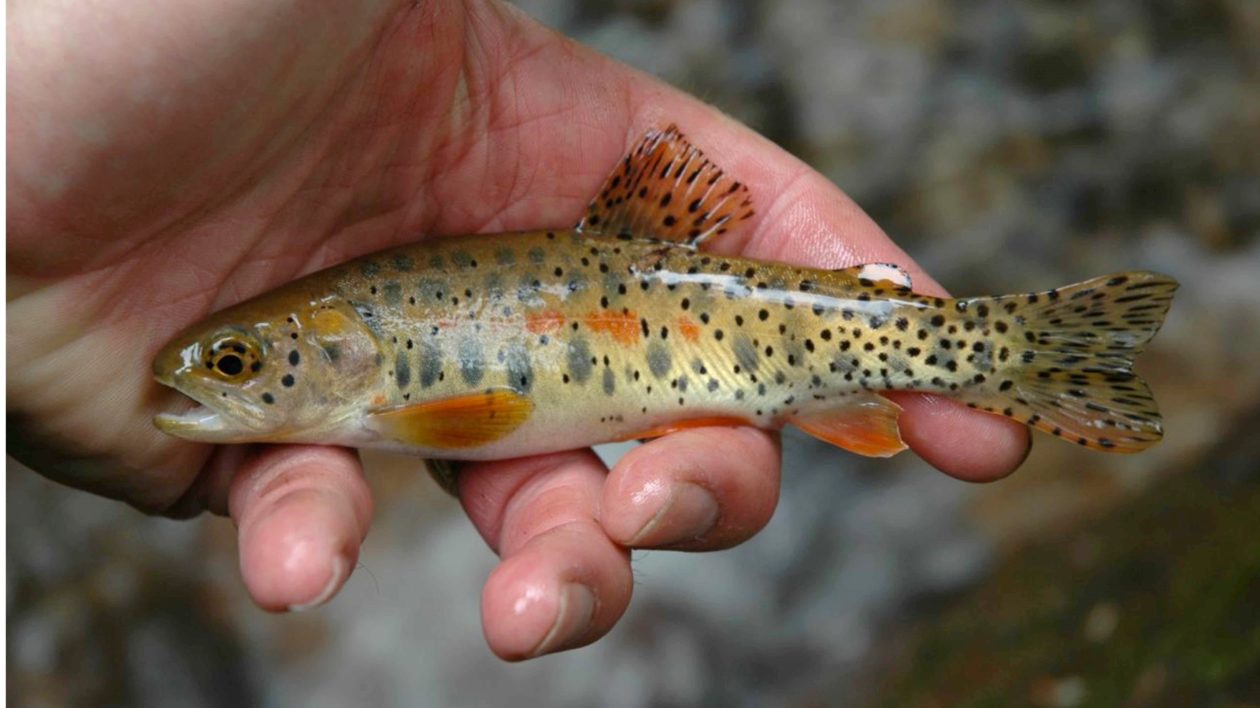
In 1973 the greenback was listed as endangered.
To remove non-native trout, streams were treated with chemical piscicides (antimycin, which is no longer available, and rotenone). And fish cultured from the Como Creek population (and subsequently discovered populations) were introduced.
Greenbacks were downlisted to threatened in 1978, a political but intelligent decision that allowed catch-and-release angling, a prerequisite for the avid public support that followed.
In 2005, the Colorado Division of Wildlife (now “Parks and Wildlife”) reported that greenbacks had been reestablished in 58 streams and lakes of Rocky Mountain National Park and surrounding national forests.
Four years later Bruce Rosenlund of the U.S. Fish and Wildlife Service told me this: “The recovery goal was 20 populations. We’re well above that, probably over 60 populations now.”
The downlisting decision was paying off, he said. Anglers were pouring into the park to fish for “greenbacks,” which were attaining lengths of 18 inches and doing far better than the scrawny, alien brook trout.
Delisting was imminent. Greenback cutthroat recovery was touted by the environmental community and media as the greatest success story of the Endangered Species Act. No writer was more effusive than I.
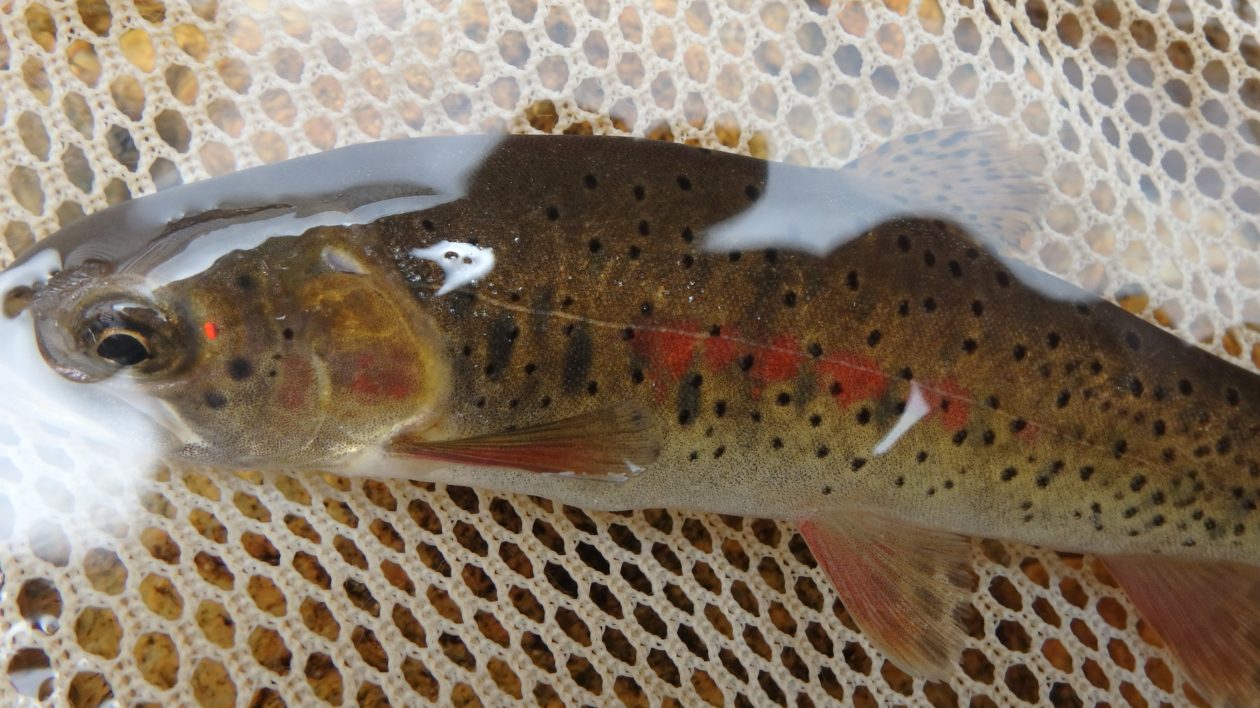
A Case of Mistaken Identity?
To me and my fellow native-fish advocates and most of the fisheries management community it was inconceivable that Behnke could be wrong about anything to do with trout.
So we were unconvinced when, in 2007, a young PhD student at Colorado University named Jessica Metcalf claimed to have found genetic markers in the alleged greenbacks that proved they were really Colorado River cutthroats from the west side of the Continental Divide.
Behnke responded as follows: “Administrators and biologists making decisions based on genetic analysis lack an understanding of the various methods of modern molecular genetics, their limitations and how the data can be open to different interpretations. A little learning without an in-depth understanding of the subject matter can be dangerous… Natural genetic variation once widespread in the ancestor that gave rise to the small, isolated populations was wrongly interpreted as evidence of hybridization… If it looks like a duck, walks like a duck, and quacks like a duck, we should call it a duck. Getting into the molecular structure of a duck can result in confusion and chaos. Now substitute greenback cutthroat trout for duck, and move on.”
Rosenlund was conflicted, but at the time he told me this: “I guess I’m not convinced that [Metcalf’s] markers indicate much of anything. I tend to be more in Behnke’s camp.”
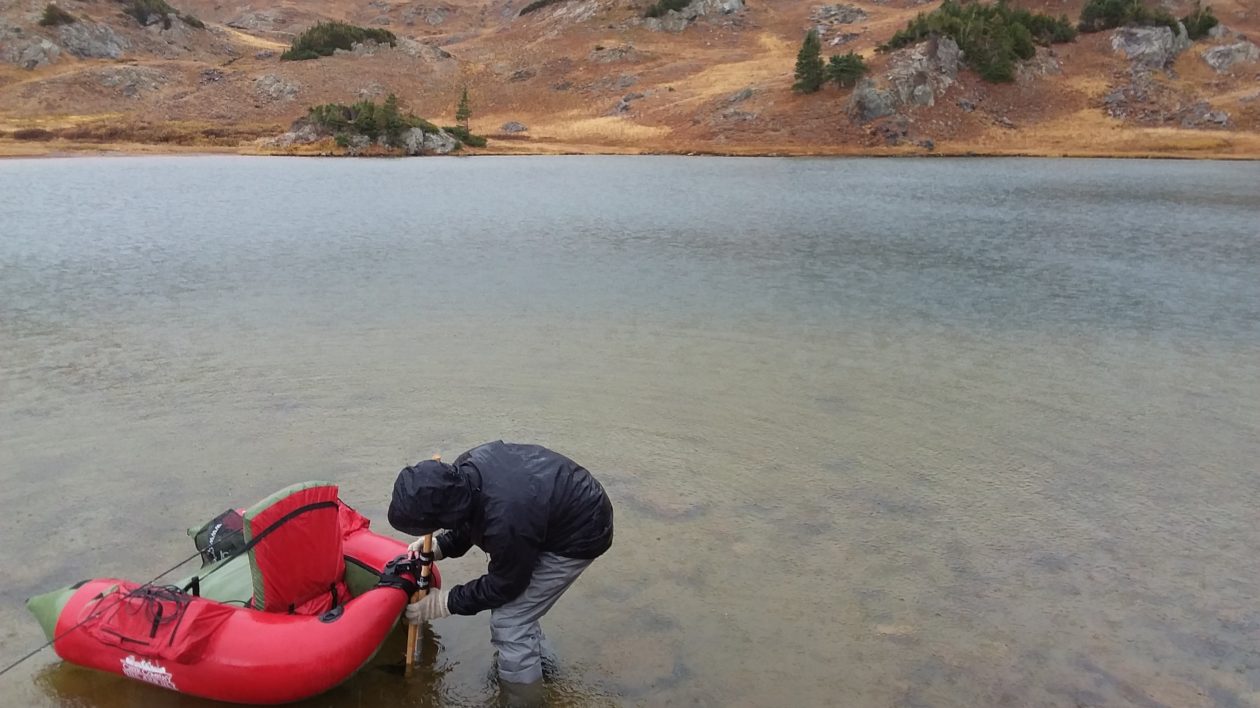
Metcalf was part of the young generation that had learned to format data electronically and apply new techniques for DNA analysis. Gradually, Rosenlund and everyone else came to understand that she was correct.
Behnke, who died in 2013, was my friend and mentor. I’m pretty sure that even he eventually saw the light, though he never said so, perhaps because he was preoccupied fighting cancer.
All the putative greenbacks were Colorado River cutthroats from two clades that Metcalf labeled “green lineage” (native to the headwaters of the Colorado, Gunnison and Dolores Rivers) and “blue lineage” (native to the upper White and upper Green River systems.)
When I interviewed Rosenlund on April 22, 2019 he said: “Everyone stands on shoulders, and they get a better view. We felt sick and heartbroken, but that’s the way it goes. Science always changes. It moves on.”
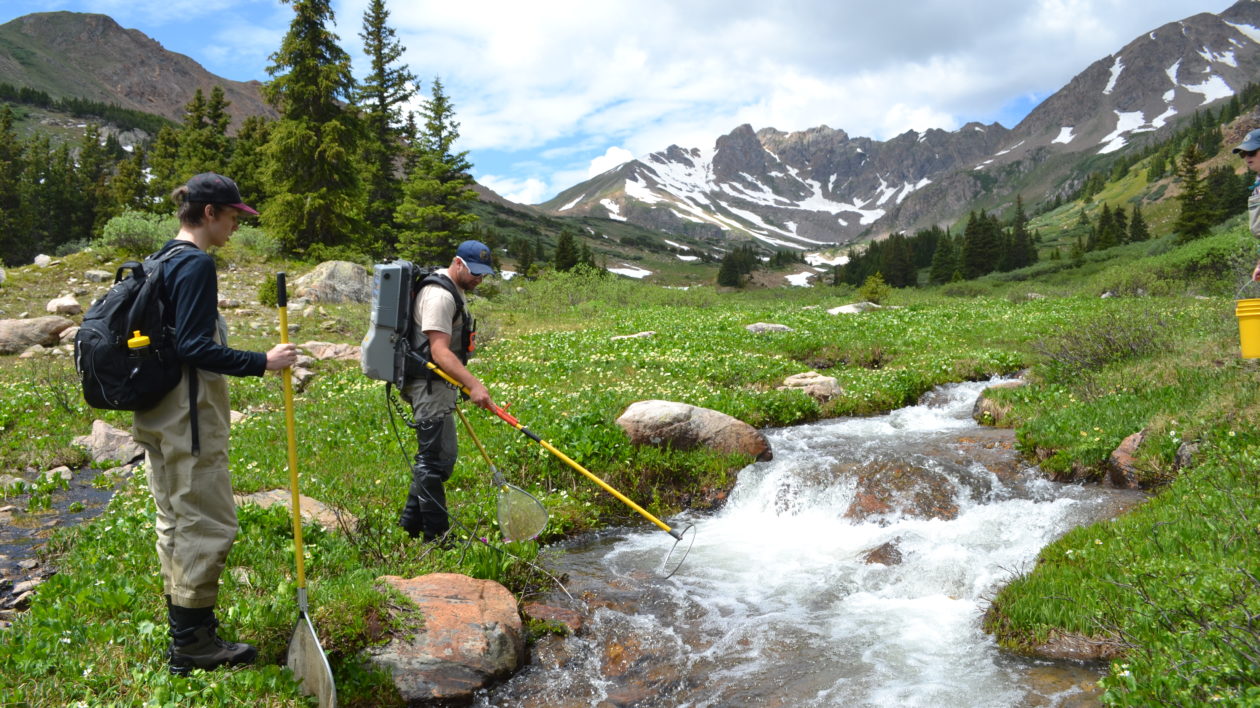
A Brief Extinction
The greenback’s return to the extinction list lasted only briefly. In 2012 Dr. Metcalf and her colleagues discovered that the planet’s entire supply of known greenbacks persisted only in a four-mile stretch of Bear Creek on the south slope of Pikes Peak, outside their native range.
Bear Creek had probably been fishless until the 1870s when J. C. Jones homesteaded the area in hope of building a hotel for tourists climbing Pikes Peak. He constructed ponds and apparently stocked them with greenbacks, some of which escaped into Bear Creek and were isolated from genetic contamination by impassable waterfalls.
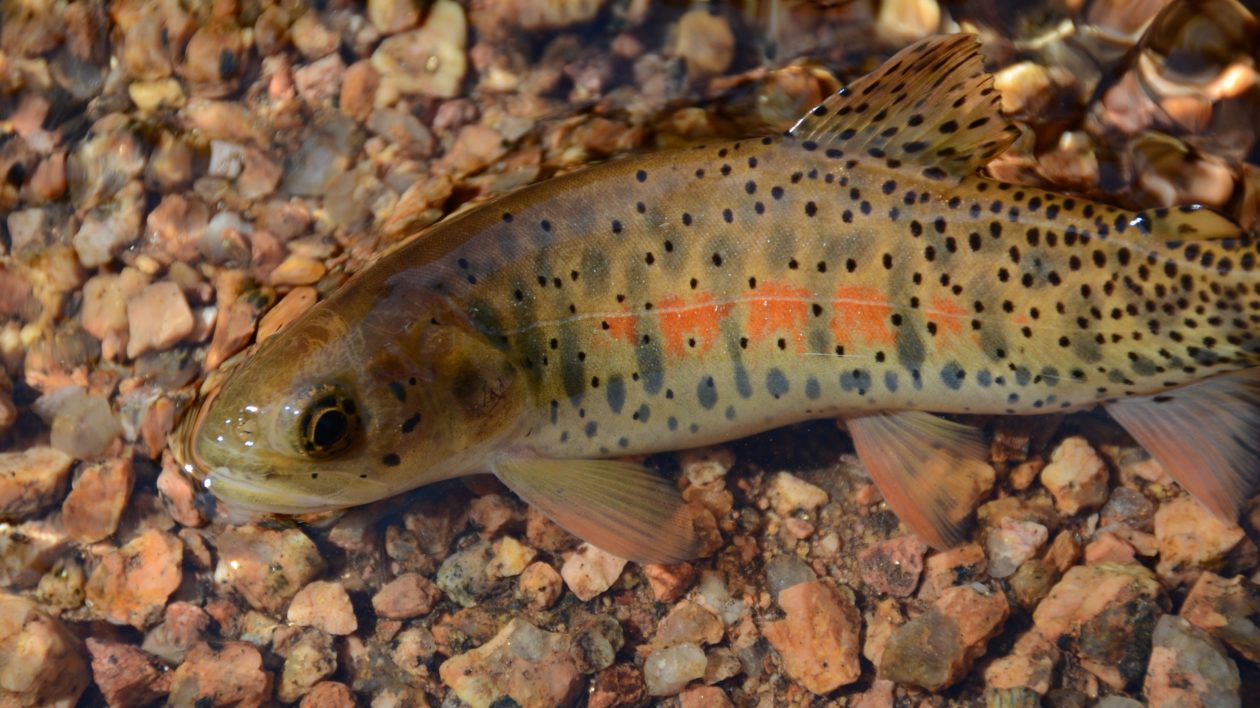
Metcalf found that populations of different cutthroats furthest apart geographically were often closest genetically. “That doesn’t happen in nature,” says Kevin Rogers of Colorado Parks and Wildlife, a former Behnke student at Colorado State University. “She correctly posited that stocking had been much more widespread than managers had guessed.
“Behnke knew there had been lots of stocking, but in remote waters like Como Creek he assumed it had been done with nearby fish. If I’m the fish commissioner in 1908 and my boys took 10 million eggs [from blue-lineage Colorado River cutthroats] at Trappers Lake [on the upper White River on the west side of the divide], I’m not bothering to go catch fish downstream of a population to stock upstream.”
“This year,” Rogers continued, “we published a follow-up study where we looked at visual characteristics of 50 populations across the native ranges of all our cutthroat lineages in Colorado — many of the same populations Behnke looked at. He couldn’t separate them because stocking had jumbled them up.”
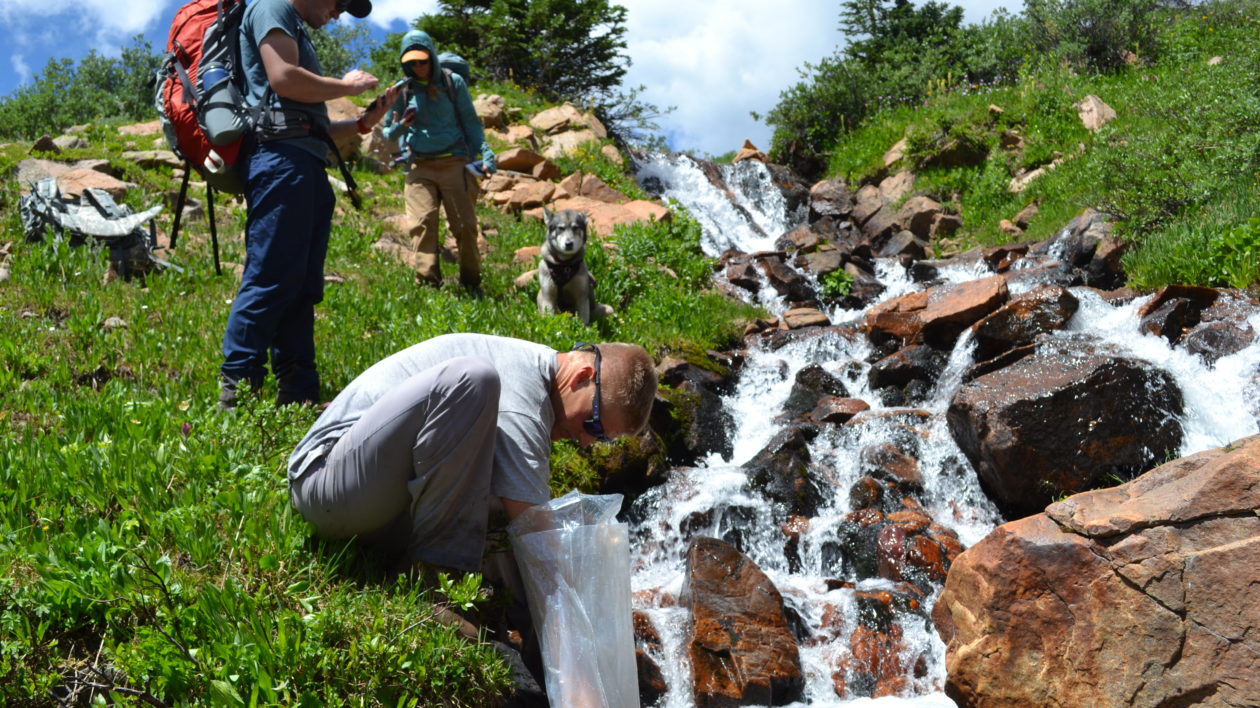
The Once and Future Greenback
So greenback recovery is again underway, this time with the right fish.
Rosenlund, who retired in 2011, helps Parks and Wildlife and partners with a new round of rotenone projects.
Two populations of real greenbacks appear to be doing well in Herman Gulch and Dry Gulch on the Arapaho National Forest.
At some unknown time Dry Gulch had been stocked with pure blue-lineage Colorado River cutthroats, valuable native fish in their own right. So before applying rotenone, managers salvaged about 90 percent of the population by electro-fishing and moved them to native habitat, a stream in the Yampa River system that had also been treated with rotenone.
In 2013 ten-acre Zimmerman Lake, high in the Poudre River basin, was cleared (with rotenone) of non-native fish to create a brood source for greenbacks, stocked the following year. Natural reproduction is rare in Zimmerman because the inlet stream is so cold, but the fish thrive there.
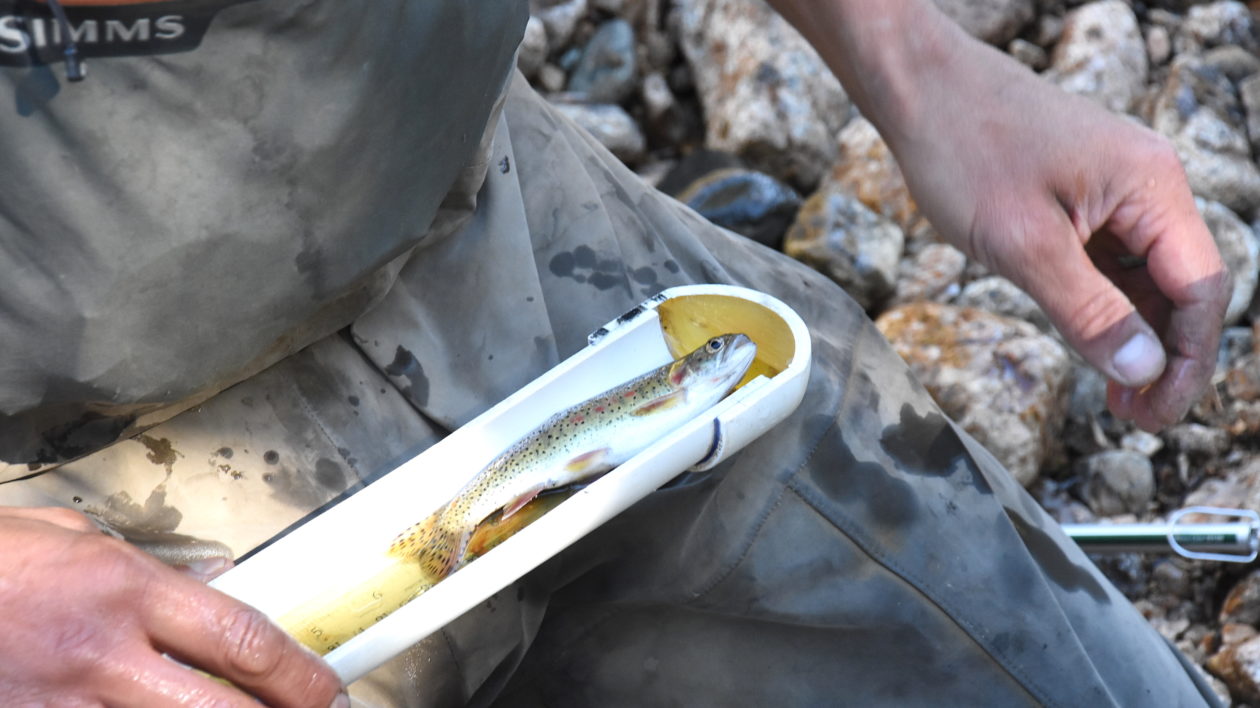
To minimize inbreeding all greenbacks in Zimmerman are tagged and tracked so that, prior to fertilizing eggs, managers can determine which fish are likely the least related.
Still, the small source population in Bear Creek renders inbreeding a major concern.
This from Parks and Wildlife biologist Boyd Wright: “In addition to Herman Gulch and Dry Gulch we’re engaged in two multi-phase projects — 14-mile-long George Creek and a major tributary [in the Poudre River watershed] stocked with what we previously thought were greenbacks. We’ve got it divided into three sections that we’re sequentially treating with rotenone because it’s again overrun with brook and brown trout. In the headwaters of the South Platte we’ll be restoring greenbacks to eight miles of Rock Creek and a major tributary.”
“This year the park will reintroduce greenbacks to West Creek,” reports park biologist Mary Kay Watry. Because it’s small and wildfire and flooding have eliminated most of the mistakenly stocked Colorado River cutthroats, eradication will be attempted by electro-fishing rather than rotenone.
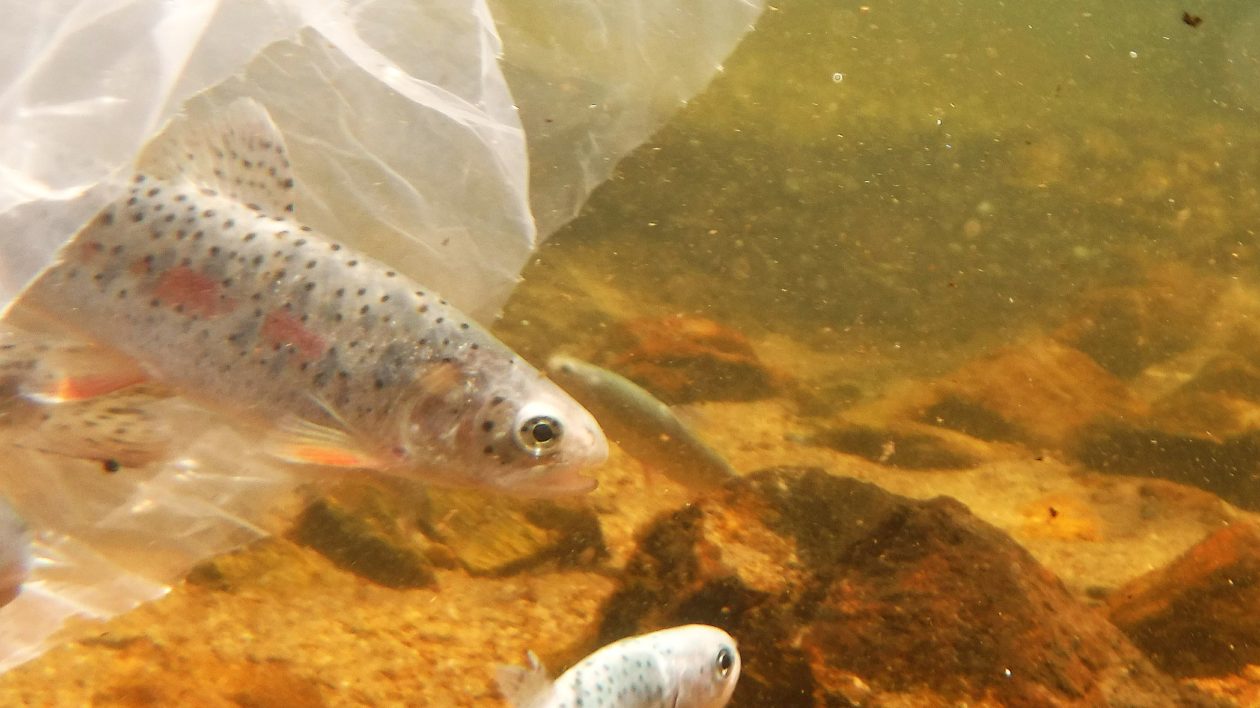
For the benefit of anglers, evacuated fish will be released below the natural barrier of West Creek Falls, water already infested with non-natives.
“Just in Rocky Mountain National Park there were 13 projects stocked with the wrong cutthroats,” says the Fish and Wildlife Service’s Chris Kennedy, who works in the park. “Some were lakes, some streams, some combinations of the two.”
But there was a bit of good blown in by the ill wind of mistaken greenback recovery. “We definitely learned a lot about techniques for removing fish,” Kennedy says.
The Park Service and Forest Service are starting a project that will restore 104-acre Longdraw Reservoir and 37 miles of connected habitat in the Poudre River system in Rocky Mountain National Park and the Arapaho National Forest. The entire project area is infested with non-native trout.
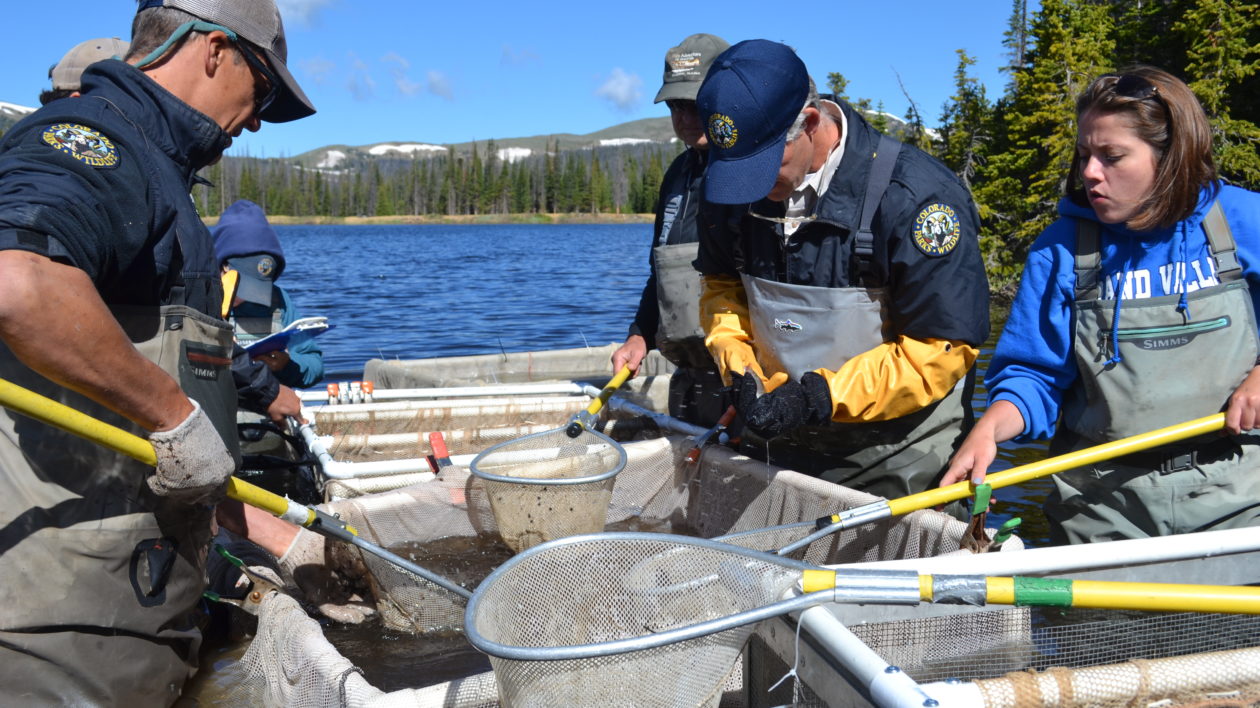
“We’ll have to construct large fish barriers,” says Forest Service biologist Matt Fairchild. “One barrier [the reservoir dam] is already in place. We have a design team working on the other barriers. We’ll do six phases of rotenone treatments.”
The current interest in identifying and recovering cutthroat subspecies, and all native salmonids, is largely Behnke’s doing. While he was misled about greenbacks by all the early stocking, he nailed the bigger and most important message.
I put it this way in the foreword of his book “About Trout”: “Shining from every page is Behnke’s love for these beautiful and complex works of evolution, his commitment to their conservation and recovery, and his rage at those who would mix, pollute, and waste their genes. He shows how our ceaseless game of musical chairs with species and subspecies has destroyed much of the grand diversity earth was blessed with, homogenizing it into muddy sameness.”
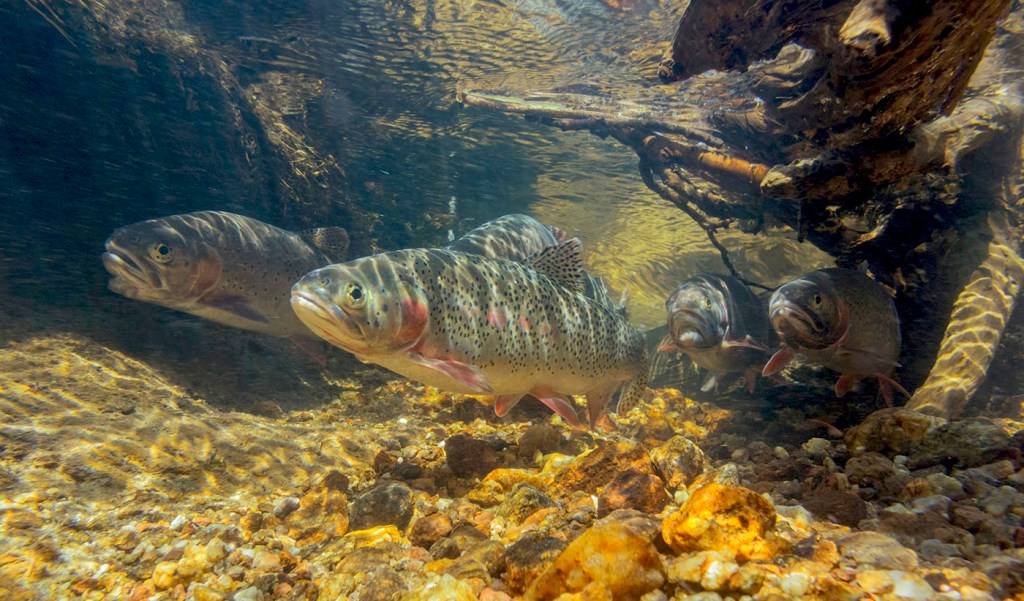



So, none of the fish in RMNP have Greenback DNA? I was under the impression that they were hybrids with Greenbacks.
Why do you have to kill the fish? Why not relocate all of them or at the very least give them to charities to feed the homeless. Wasteful.
Kathy: It would be great if it were possible to eliminate all the alien and mongrel
fish and at the same time use them, but it is not. The only way to save native fish from genetic introgression, competition and predation (and resultant extirpation or extinction) is to poison out the mongrels and aliens with rotenone. You need a 100-percent kill, anything less and you fail. No other method works. So, no, native fish recovery with rotenone is never “wasteful.”
Thank you for pointing out that mixing populations muddies the waters in a way that is not likely to clear up the way the water does after the spring rains.
I loved reading this. As a kid growing up fishing Rocky Mountain National Park, we knew things. That there were cutthroats in Chasm Lake, at the base of Longs Peak, but they were all ancient and old, couldn’t spawn, and had been put there by someone. There were cutthroats in Sand Beach Lake. But they were different from the cutthroats in the small stream called Hunter’s Creek that you crossed on the hike in, and that there were no other species in the little creek because of the torrents and waterfalls that separated it from the North St. Vrain. It seems to surprise everyone that fish everywhere are mongrels, but you have to understand something. Kids move fish. Before I was 12, I was shuffling fry from Hunter’s Creek into little holding ponds behind our family cabin, then on into whatever beaver pond or side creek I thought of as secret and fishless. Times change, values change, and I imagine that the statute of limitations has expired on this particular episode of humans being human. We move things from where they are into fresh places where we hope they will thrive and do better. It’s exactly what all these biologists with their rotenone and their gene maps are doing. They’re doing it with a particular righteous arrogance that what all their predecessors did was wrong, while they are uniquely right. There is a curious irony to see these mainly progressive people reacting with extreme intolerance for immigrant fish, holding “native races” to be so superior as to justify wholesale fish genocide. Preservation of genetic diversity is one thing, but trying to erase the current world and reinstate some imaginary, perfectly natural past is the errand of idiots, and one that should be considered more carefully.
It seems that your comment was meant only to disparage and refute the important work of making things right. I detected nothing of arrogance in the article, only the history of what was, and now what is.
Great article except for the omission on any mention of the substantial role that the Leadville National Fish Hatchery has played in the restoration process. The hatchery has been critical in propagating the fish that are currently being stocked in the recovery streams and is working hard to preserve the limited genetic diversity that remains in the greenback population through a genetic matrix process.
My friend Skip Mackey was on a quest to add the greenie to his fly fishing life list, he thought he did but with reservations due to the emerging controversy in 2013 when he passed.
For more on the effort to save and restore native fishes log on to the blog I run for Native Fish Coalition at: https://nativefishcoalition.org/blog
best,
Ted
I hope the restocking of streams and rivers will have better trained personnel and those who order such maladaptive events as they have in the past either will fight for what’s right or will refuse to pollute a rivers space with the wrong fish.
I enjoyed reading this article immensely and have immediately become a fan of your publication and organization. I too am a strong advocate for native fish and have fished for all four species of cutthroat native to Wyoming. Just recently I had the great pleasure of fishing for wild brown trout in one of Ireland’s great limestone lakes, Lough Corrib. They do not refer to the trout as native for they are a blend of the four strains of brown trout native to Ireland and further hybridization now occurs in many large lakes. But Corrib is considered among the best wild brown trout fisheries in the world. These kinds of native fisheries in the U.S. are incredibly valuable resources. I applaud the fisheries biologists and officials cited in your article for their long- term dedication to native fisheries and some very good strategies for generating public support. I wish that such dedication for native fisheries existed in my own state. But each year I have the opportunity of fishing for wild and native brook trout and landlocked salmon in their native, New England environments. It is a great privilege to fish these places and experience the environments in which these fish have naturally evolved. I should like to see the U.S. have a native fish sanctuary system wherein such places were given added protection.
This is an excellent summary of the various stories about the Greenback that have been appearing over the past couple of years. Thanks, Ted, for putting it all together and illustrating that when we have the right data, and the right tools, we can fix some of the messes our predecessors made in their well intentioned, but now understood to be ill conceived, efforts to create better recreational fisheries.